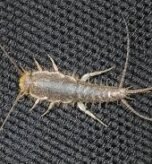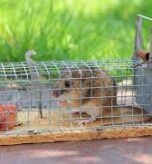Crickets, easily recognized by their distinctive chirping, are increasingly valued as a sustainable food source and as essential nutrition for various captive animals. Because they are omnivores, their health and growth depend entirely on a comprehensive understanding of the proper cricket diet and environmental conditions. Consequently, this guide provides a detailed exploration of cricket care, aiming to equip you with the knowledge to cultivate a thriving colony and address common challenges like cannibalism.
Understanding the Ideal Cricket Diet
Crickets are omnivores and scavengers, which means they require a balanced diet to grow, reproduce, and stay healthy. In fact, the quality and consistency of their feed directly influence the success of any cricket farming operation.
The Importance of Protein and Carbohydrates in a Cricket Diet
Protein is a critical component of the cricket diet, significantly impacting growth and yield. For example, research on tropical house crickets shows that a 3:1 protein-to-carbohydrate ratio maximizes yield. This specific diet promotes higher adult development rates, greater body mass, and larger size. Furthermore, protein intake influences behavior; while a full stomach inhibits movement, a lack of protein can lead to increased activity and even cannibalism.
Essential Micronutrients for Cricket Nutrition
Beyond macronutrients, crickets need key vitamins and minerals. Researchers identify salt as a crucial limiting resource that can drive mass movement and cannibalism in the wild. When raising crickets as feeder insects, their diet directly transfers nutritional value to the pets consuming them. Therefore, you must include essential vitamins (like C and D3) and minerals (like calcium) in their feed. Spirulina, for instance, is an excellent supplement that provides beneficial protein and B vitamins.
How a Cricket’s Diet Changes with Life Stage
A cricket’s nutritional needs vary throughout its life. While young crickets don’t gain much absolute biomass, their early growth rates profoundly affect their lifelong development. To ensure uniform growth, you should provide a balanced feed, such as grower’s mash, for the first 14 days. In contrast, breeding females require a much higher protein intake—about double that of a maintenance diet—to support successful reproduction. For a temporary high-protein supplement, you can offer crushed, high-protein cat kibble.
Best Practices for Feeding Crickets
Effective cricket rearing requires careful attention to feed quality, consistency, and hydration. A proper cricket diet is the cornerstone of a healthy colony.
Choosing the Best Feeds for a Healthy Cricket Diet
The cost of commercial cricket feed can be a major challenge for small-scale farmers. However, research highlights kales and sweet potato vines as highly effective and affordable alternatives. Crickets fed these locally available greens showed significantly higher weight gain, faster maturity, and increased protein content. Other beneficial feed options include dandelion greens, carrots, red pepper, fruit peelings, and kitchen leftovers. Ultimately, an omnivorous feeding approach that combines both plant and animal-based foods is ideal.
Gut-Loading: Enhancing Your Cricket’s Nutritional Value
Gut-loading is the process of feeding crickets nutrient-rich foods shortly before offering them to your pets. This practice is paramount for the health of insectivorous animals, as it enriches the crickets with vital vitamins and minerals.
Key gut-loading ingredients include specialized supplements like bee pollen, mushroom powders, spirulina, and dried kelp powder. You can mix these with ground oats and eggshell powder to create a powerful supplement. However, you should be cautious with calcium supplementation for certain pets, like tarantulas, as excess calcium can harm their exoskeletons.
How Often to Feed Crickets and Keep Them Hydrated
You should provide crickets with feed ad libitum (as much as they desire) to prevent them from starving. It is crucial to provide fresh food daily and promptly discard old food to prevent spoilage and bacterial infections. In addition, you must provide adequate hydration through a shallow water dish, water crystals, or bug gel.
Foods to Avoid in a Cricket Diet
While crickets are scavengers, certain items can be harmful. You should never offer them spoiled or moldy food, as this can introduce deadly bacterial infections into the colony. Although a specific list of toxic foods is not well-documented, sticking to fresh, clean produce and grains is the safest approach.
Cricket Husbandry: Creating the Right Environment
Optimal environmental conditions and strict hygiene practices are just as vital as the cricket diet for successful rearing.
Optimal Enclosure and Environmental Conditions
Adult crickets thrive in temperatures between 80-90°F (27-32°C), while nymphs require even higher heat and humidity. Maintain humidity levels around 40% for adults and mist the enclosure occasionally to help them shed. Additionally, ensure there is adequate space and ventilation to prevent overcrowding. Providing rocks and branches for climbing offers important environmental enrichment.
Hygiene Practices for Disease Prevention
Regularly cleaning and disinfecting cricket enclosures is critical. You must promptly remove dead crickets and old food to reduce the risk of bacterial infections and cannibalism. Diseases like Cricket Paralysis Virus (CPV) can devastate a cricket farm, which underscores why good hygiene is a primary defense.
Using Diet to Prevent Cannibalism in Your Colony
Cannibalism is a major concern in cricket colonies. It is often triggered by a lack of essential nutrients, especially protein and salt. Therefore, providing a balanced cricket diet with sufficient protein and salt can significantly reduce this behavior. Promptly removing dead crickets also helps prevent cannibalism from starting.
Economic and Ethical Sides of Cricket Farming
As cricket farming grows, it is important to consider the economic and ethical dimensions of the practice.
Finding Cost-Effective, Sustainable Feeds
For many smallholder farmers, the high cost of commercial cricket feed is a primary challenge. Promoting the use of locally available and nutritious feedstuffs, like kales and sweet potato vines, offers a sustainable and economically viable solution.
Ethical Considerations for Mass Rearing
The natural drive for cannibalism in crickets under poor conditions raises important questions about animal welfare in commercial operations. While cricket welfare standards are not yet widely established, the behavioral responses to nutrient stress and crowding suggest a need for developing more humane practices in large-scale cricket farming.
Conclusion
Successful cricket rearing depends on a thorough understanding of their nutritional needs and diligent care. By optimizing the cricket diet with adequate protein and salt, implementing rigorous hygiene, and maintaining the right environment, breeders can foster healthy colonies and effectively prevent issues like cannibalism. Future efforts in cricket farming should focus on sustainable feed sourcing and the continued development of ethical rearing practices.




1 Comment
KWt5n0t
August 15, 2025, at 2:36 pmWoh I enjoy your articles , saved to favorites ! .